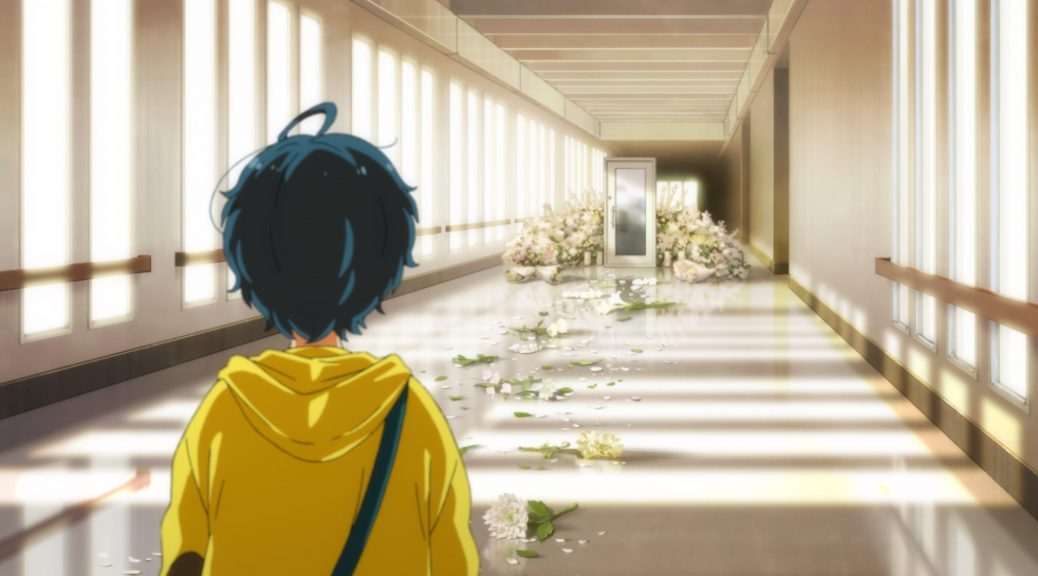
Wonder Egg Priority – Production Notes 01-02
Wonder Egg Priority is a truly unique show, an effort by an up-and-coming star to repurpose the creative language of one of anime’s greatest directors in a way that fits his own circumstances. Grasping its context only makes its quality even clearer.
There’s something about works that are nothing like anything else out there that makes people immediately compare them to others. While that sounds backwards, it’s understandable; it’s often hard to articulate exactly why they feel so fresh, so people instead point towards other titles that are widely understood to be revolutionary in their own ways. Wonder Egg Priority is one such anime, hence why you can already come across many comments saying that it’s the second coming of Mawaru Penguindrum, Paprika, Madoka Magica, and whatever Haruki Murakami the person in question happens to prefer. Mind you, this is not criticism of all those comparisons: there is truth to a lot of them, from shared themes to simply holding similar expectations for their audiences. You know what this wildly imaginative, socially-aware, and daring original anime owes a lot to, though? Girls drinking tea and occasionally playing music.
The influence of Naoko Yamada’s works over the anime industry as a whole has been palpable since K-ON! became a megahit over a decade ago, but the ways in which that has manifested make all the difference. The first waves were the most superficial, all relating to the aspects of her work that you can quickly try to mimic. It’s no secret that producers wasted no second to greenlight dozens of shows about girls simply hanging out in high school to chase K-ON!’s tremendous financial success; it’s also no secret that, for the most part, they failed miserably. Not having understood what made it so powerfully relatable even for audiences who didn’t normally care for latenight anime, these shallow and somewhat cynical projects trended down over the years. They’ve now become residual, as even most titles under the same publishing branch revolve around more exotic premises and settings when compared to the grounded post-K-ON! era.
At the same time, another surface-level yet more interesting trend also kicked off. Although Yukiko Horiguchi had already enamored animators all over after her debut as character designer and chief animation directorChief Animation Director (総作画監督, Sou Sakuga Kantoku): Often an overall credit that tends to be in the hands of the character designer, though as of late messy projects with multiple Chief ADs have increased in number; moreso than the regular animation directors, their job is to ensure the characters look like they're supposed to. Consistency is their goal, which they will enforce as much as they want (and can). with Lucky Star—hence why a certain someone used the pen name Horiguchi is god in 2008 sakugaSakuga (作画): Technically drawing pictures but more specifically animation. Western fans have long since appropriated the word to refer to instances of particularly good animation, in the same way that a subset of Japanese fans do. Pretty integral to our sites' brand. festivals—it was K-ON! that took her pedigree to the next level, essentially turning her into the most influential animation designer of the decade. Outstanding animators with seemingly very different philosophies to hers like Chikashi Kubota and Yuki Hayashi expressed their profound reverence when visiting her recent art exhibitions, so you can only imagine the level of idolatry she was professed by artists who do have similar goals. From outright mimicry like Sora no Woto to more subtle approximations to her loose, bouncy, yet somehow grounded forms, you couldn’t turn a corner without encountering some sort of Horiguchi influence. And in some ways, you still can’t.
As undeniable as Horiguchi’s talent is, this obviously ties back to Yamada. Not only was it her works that best exhibited Horiguchi’s animation philosophy, but there’s also the fact that those principles are something they forged together. While they were great friends and coworkers essentially since the start, it took their willingness to meet the other halfway through to find the magical balance that quickly inspired so many. For an amusing example, they would argue for days about the exact weight and proportions of each K-ON! character, in what was essentially a clash between Horiguchi’s natural affinity towards cartoony stylization and Yamada’s realistic fundamentals—in that case, because she wanted the cast to be relatable to actual schoolgirls. The shift in the approach to the animation between the first and second seasons of K-ON! embodies that balance they settled on: still inherently fun to look at, but with an immediately relatable quality to the animation that fit Yamada’s storytelling perfectly. It’s no wonder so many artists in the industry saw them as the new ideal to chase.
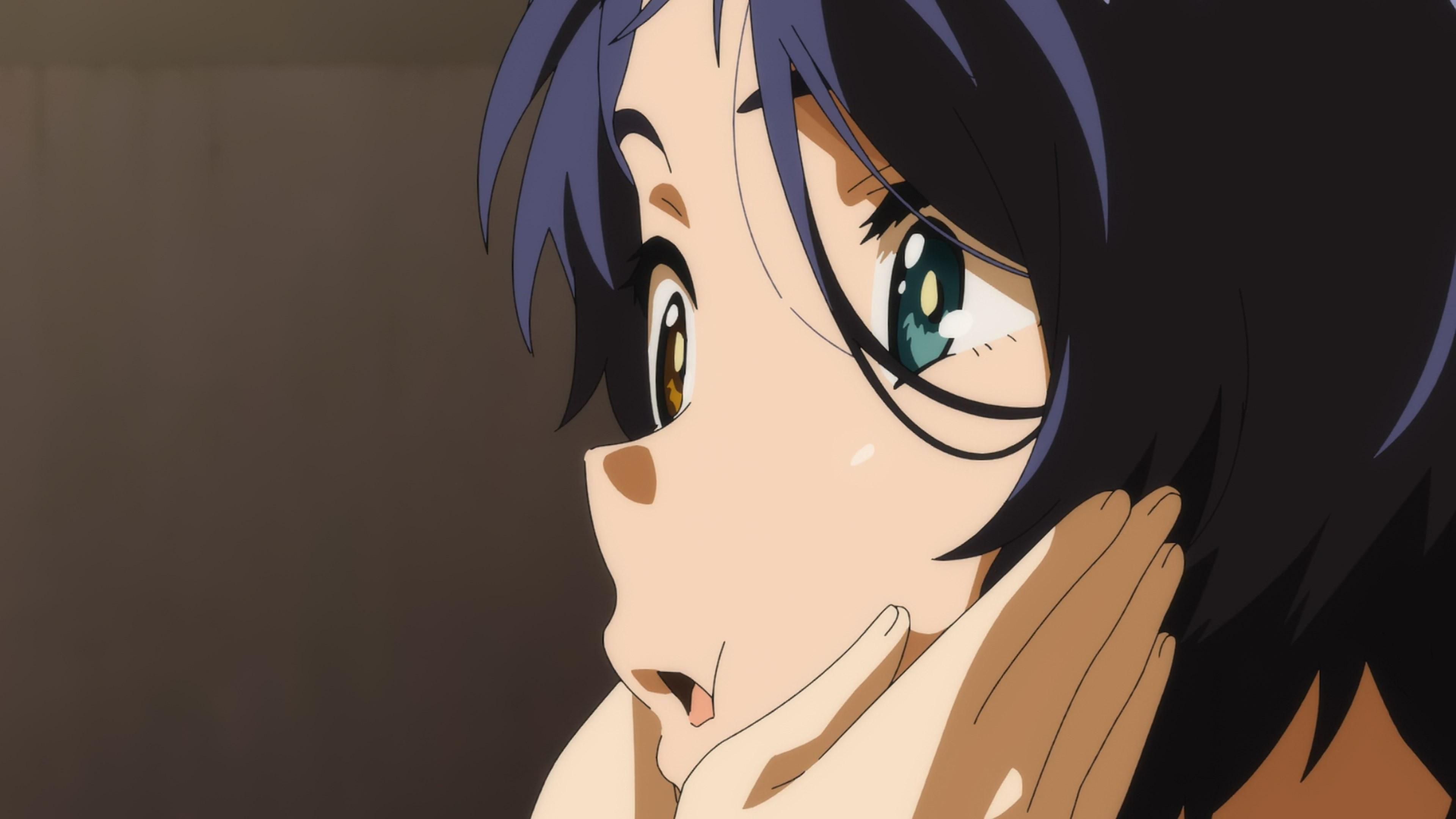
At the end of the day, though, the works that drew inspiration from Yamada’s output were still far from capturing her spirit in truly meaningful ways; some individuals artists did manage to absorb that animation philosophy Horiguchi had developed in more profound ways than just mimicking her designs, but being able to build an entire work around that was much harder, both in technical and thematic terms. It would take years for directors out there to figure out exactly what made all those individual elements in Yamada’s work come together in such an appealing way, and for Yamada herself to refine it more and make that appeal easier to grasp. By early 2018, both conditions had been met—Yamada’s own Liz and the Blue Bird and Shin Wakabayashi’s 22/7 The Diary of Our Days short film series prove that.
I’ve said my piece about Liz, and so have a bunch of folks in the anime industry and its surroundings for that matter; despite its modest financial success, the movie was seen as an illuminating game-changer in the creative side of things, a paradigm shift in what’s possible to do—again, technically and thematically—in animation right now. After the release of Koe no Katachi, Makoto Shinkai had already referred to that style Yamada was in the process of perfecting as one so elegant you can’t help but want to copy it, and yet you simply cannot pull it off. Unburdened with the responsibilities he has, and with the adventurous spirit that younger creators tend to have, newer generations of directors have arrived to disagree with him.
We’ve talked about some of the most notable young directors who’ve embraced Yamada’s style, as well as older ones pivoting straight into her path, but none of them has been able to match Wakabayashi’s efforts in this field; both in how long he’s been at it, and how convincing his attempts have been. As a character animator, Wakabayashi already stood out for the authentic feel of the minutiae of his acting, so it’s no surprise that he gravitated towards someone like Yamada once he became a director. When he started receiving projects of his own and space to breathe, his style quickly stood out: transparently borrowing Yamada’s techniques, but modulating distance and rhythm to establish a voice of his own. His boards felt less preoccupied with directly mirroring hers—fewer leg and hand shots, for a simple example—when compared to other Yamada followers, but perhaps it’s precisely that which allowed him to get to the core of what makes her works so resonant. The contrast between the mundanity of the moments he depicted and the specificity of their texture made 22/7 The Diary of Our Days into a nostalgia bomb in the way K-ON!’s greatest moments were. So non-descript in their essence yet so palpable in their execution that they can easily trigger old memories of yours, even if the events aren’t really similar.
Of course, it helps that he had none other than Horiguchi by his side during the production of those 22/7 short films, as by this point she had pulled off what we call a Yoshiyuki Sadamoto move; as in, she’d pretty much quit animation work, not gone on racist revisionist tirades like he has. After leaving Kyoto Animation and the anime industry altogether to focus on illustration work and simply taking it easier, Horiguchi was dragged back in through an idol project she’d contributed to since its early stages. And, when it came time to promote it with animated character introductions, Wakabayashi had the privilege of working side by side with one of the greatest allies Yamada’s ever had, which helped him come closer than anyone else to recreating her magic outside of KyoAni. In fact, he came so close that he found the invisible wall.
As it turns out, you can’t actually do KyoAni outside of KyoAni. A director who deeply gets the appeal of their star director worked alongside the person who honed her acting sensibilities, leading a talented team to work in a small scale project… and yet, something was slightly off in the finished product. Despite the undeniable quality of the animation, Horiguchi being out of form led to small imperfections, and the in-betweening couldn’t compare to the seamlessness you can take for granted with Yamada’s projects at KyoAni. There is a degree of immersion that she can take for granted that you can’t have elsewhere; the consistent quality of the drawings and full realization of every shot she comes up with are a factor of course, but so is the strength of the studio’s other departments, as seen by their exquisite compositing and the art crew’s ability to make you forget that nearly the entirety of Liz is set inside a school. Assembling a high-profile anime production is relatively uncomplicated, but putting together one where you can trust every single element to click this seamless is pretty much impossible, and that’s kind of a problem if you want to follow the steps of a director whose building blocks are impeccable reproductions of daily life.
Since sakugaSakuga (作画): Technically drawing pictures but more specifically animation. Western fans have long since appropriated the word to refer to instances of particularly good animation, in the same way that a subset of Japanese fans do. Pretty integral to our sites' brand. fans gravitate towards easily recognizable individuality, I feel like even the people who should be most aware of the studio’s consistent excellence tend to miss this point. Amusingly, it’s seasons like the current one without a KyoAni offering that can make people start realizing their staff’s unreasonable level of skill, at least on an individual level. In a BONES project like SK8 with access to the industry’s biggest names, it’s ex-KyoAni animators like Chiyoko Ueno and Tomoyo Kamoi who are carrying the biggest, most emotionally resonant scenes. Another high profile animation effort like Jujutsu Kaisen relied on none other than Saeko Fujita to handle its dazzling rotoscoped ending in a graceful, convincing way, just as Kaguya-sama had done with another ex-KyoAni animator. After decades spent actually training their staff to excel character animation, they’ve gotten quite good at it—and that’s still just one cog in their exceptional creative machine.
Now, I don’t think it’s wise to reduce creators to a consequence of their surroundings. It’s safe to say that regardless of her workplace, Yamada would have found a way to make communication a big theme in her works, as that interest is derived from her own struggles. That said, it’s obvious that she settled on her current style because a unique place like KyoAni allowed her to; a creator with a tendency towards the quiet moments, who prefers towards non-verbal communication, pursued a language of silence in animation that feels like a natural extension of the studio’s culture. And that brings up the question: if nailing this elsewhere is so difficult that it might as well be impossible, what are the directors who look up to her supposed to do? Accept the imperfections, like Irei recently did? Stick to copying elements of it, like her early followers or most recently Tamura? Just give up entirely, as Shinkai said to? I find that the most interesting solution is the one that the likes of Wakabayashi have arrived to, simple as it sounds. If making something that is as engaging to sit through as every second of Yamada’s films are while remaining that quiet, you just raise the volume. That way, subtle imperfections during the downtime can be drowned, and the snappier moment-to-moment can keep your audience engaged from a slightly different angle.
Unfortunately, the anime production process doesn’t have a simple slider that you can crank up and down, so what does that actually entail? The answer is… well, everything that Wonder Egg Priority is currently doing. Its enchanting introduction is nearly identical to Liz’s musicality, with a rhythm marked by Wakabayashi’s knack for abbreviation. And then, a bug talks. The narrative volume goes up. This is all depicted by WEP’s core animator Keisuke Kobayashi, known for his attractive style built upon over-articulation; a smart approach akin to hyperrealism but not incompatible with simplified designs, going beyond true to life levels of body motion to evoke the feeling of authentic liveliness. Snappy movements, constantly engaging to the eye without that excruciating care that KyoAni’s quieter approach demands—the volume of the animation is also raised. Excellent individualities, starting with Wakabayashi’s own storyboarding in direction, are emphasized over the strength of a collective they couldn’t match. Sorry Shinkai, I’m going to side with him and say it was possible, as long as you’re nothing short of a genius and can build a new system aware of your strengths and weaknesses.
Action director Yusuke Kawakami is one of the specialists that allows WEP to operate at a higher intensity, using his mastery of threedimensional battlefields to make the monster of the week formula a spectacle to sit through.
That is an extremely long introduction to get across why this newcomer who’s dazzled everyone does things the way he does, since many viewers were wondering what his inspirations could have been. This is not to say that people who are drawing parallels to the likes of Kunihiko Ikuhara and Satoshi Kon are in the wrong, but I don’t think you can get a good read on Wakabayashi himself with those two as your sole points of reference. WEP, set in a world where a system rooted in capitalism is so obviously rigged that the question is not “will it be evil” but “what are the ways in which its many evils will manifest” is by all means hitting similar notes as Ikuhara’s works. And yet, much of that is clearly owed to its writer Shinji Nojima, who’s got quite the pedigree when tackling societal issues. I would also agree that its intertwining of reality and dreams, present and memories, feels as confident as Kon’s transcendent direction. As good as some of the transitions between Ai’s realities are, though, implying that Wakabayashi has anywhere near Kon’s finesse when editing space is kind of a stretch—and kind of rude too, since he’s already in a tough enough spot being compared to another of anime’s greatest directors.
Regardless of how people perceive him, Wakabayashi appears to be fully aware of his own qualities and needs. Look no further than WEP’s animation producer: Shouta Umehara, who’s not just right about the highest regarded person on the production side of things, but also someone so enamored with KyoAni’s work that he once tried to join the studio; incidentally, the way he gets over that is by calling dibs on a now freelance director who was another inseparable friend of Yamada’s, so you can start praying that she does show up over here. The team they gathered together follows the tone set by Kobayashi, with followers of Tetsuya Takeuchi’s lineage like Jin Oyama taking on important roles in this production. Rather than experience, Wakabayashi is trusting staff depending on their ability to slightly exaggerate real life in compelling ways, as that’s the way he found to iterate on his idol’s work in a way that naturally befits his surroundings.
Once you get that, many of WEP’s mystifying decisions begin clicking. You understand why such a blunt and impactful story would be peppered with meaningful silences reminiscent of Yamada’s. Why they’d rely on her layered usage of flower language—with a hidden meaning for those who know, but effective in its composition and usage of color even if you don’t—or accentuate beauty with depth of field, when the narrative deals with such ugly situations. Why there is real life footage in conjunction with exaggerated character animation in the opening sequence, or why very natural dialogue is combined with abstract, high-concept exposition. Nightmarish imagery and dorky mannerisms, a dense plot that demands a lot of explaining, but also the idea that worthwhile relationships are built upon accumulated pointless interactions. This is Wakabayashi’s answer to the riddle of how to translate Yamada’s charm into a language that fits his own circumstances, and there is cohesion through the consistent contrast.
And that does explain why everything about the first episode simply felt right, even to viewers without all this context we’ve been talking about. As openly as it channels her work, you don’t need to know who Yamada even is to enjoy this intimate interaction between the protagonist and Koito Nagase, who once was her one friend; the tactility of the animation and elegant delivery are self-contained goodness that fit perfectly within the system Wakabayashi built, as a great example of its more understated side. On the other end, we have Ai’s grandiose rebellion against the complicity of abuse, delivered via a thunderous impact that’s satisfying to watch, but not lacking in nuance either—the fact that she has to run away from the girl she’s supposed to save to gain momentum is a great way to underline her change. From the reciprocation of a gesture that still captures the difference between Ai and Kurumi’s mental states to the poignant moment between the two earlier, where the latter admits she only had superficial friends to have a laugh with rather than real ones who’d stick with her through thick and thin… then is temporarily abandoned by our protagonist after having some natural laughs with her, it all felt perfectly deliberate. One of the best premieres I’ve seen in ages, so I’m not surprised many people were immediately drawn in.
Given that Wakabayashi appears to be so integral to the success of the first episode, would the show be able to sustain itself beyond his introduction, when handled by different directors? Episode #02 cleared up those doubts by being about as fascinating, albeit lacking the perfect elegance of the premiere’s delivery. With Nojima’s script retaining the same qualities and the very deliberate staffing choices we’ve mentioned earlier, it shouldn’t be much of a shock that the fundamentals remained as strong. The second episode was handled by Yuta Yamazaki, who clearly feels right at home working with his senior Wakabayashi. Although I’ve prefaced this by saying that he doesn’t really have the finesse of his predecessor, that doesn’t mean his storyboards were lacking in nuance. The focus on distorted reflections felt appropriate in an episode that had to deal with matters as hurtful as sexual abuse without betraying the tone that Wakabayashi had set by being too explicit. The flashback to Ai’s inaction in the past is chilling in its indirect portrayal of those events, and forcing her to once again spy through a gap is a great way to make her revisit the ghosts haunting her.
After giving it plenty of thought, I believe that the greatest success of this second episode was how well it pushed the audience towards theory-crafting. The first episode was masterful, but since the audience didn’t have enough of a grasp of WEP’s world yet, it made it quite hard to make substantial predictions. With all the tidbits and implications in the second episode, however, we’re now at the point where the show’s viewers are all letting their imagination loose and trying to guess where the specifics are heading—as the themes themselves are more than clear. Wakabayashi himself has outright said that one of his goals is to allow viewers to enjoy this process of gradually unraveling the mystery, so you can look forward to a dozen weeks that will be intense even in between the broadcasts.
Is the link between the specific types of abuse Ai witnesses every week and the truth behind her friend’s specific situation merely for cohesion, or will there be a narrative justification to make her go through that pain? Given what we’ve been told about running away being no salvation, will Kurumi show up again? Is an Aniplex producer going to miss the point so badly that they’ll push for a gacha game tie-in for WEP? These are the kind of questions that keep me awake at night until the next episode, when more of them are sure to be raised. Both as an anime production and with its storytelling, Wonder Egg Priority is treading a fine line that separates what could easily be the show of the year from a painful tragedy. By finding his own way to iterate on another genius director’s formula, mixing ingredients you wouldn’t expect to see together, Wakabayashi has already put together one of the most interesting TV anime offerings in years. If he sticks the landing, he could have an all-timer to his name.
Episode 01
StoryboardStoryboard (絵コンテ, ekonte): The blueprints of animation. A series of usually simple drawings serving as anime's visual script, drawn on special sheets with fields for the animation cut number, notes for the staff and the matching lines of dialogue., Episode DirectionEpisode Direction (演出, enshutsu): A creative but also coordinative task, as it entails supervising the many departments and artists involved in the production of an episode – approving animation layouts alongside the Animation Director, overseeing the work of the photography team, the art department, CG staff... The role also exists in movies, refering to the individuals similarly in charge of segments of the film.: Shin Wakabayashi
Animation DirectionAnimation Direction (作画監督, sakuga kantoku): The artists supervising the quality and consistency of the animation itself. They might correct cuts that deviate from the designs too much if they see it fit, but their job is mostly to ensure the motion is up to par while not looking too rough. Plenty of specialized Animation Direction roles exist – mecha, effects, creatures, all focused in one particular recurring element.: Saki Takahashi
Key AnimationKey Animation (原画, genga): These artists draw the pivotal moments within the animation, basically defining the motion without actually completing the cut. The anime industry is known for allowing these individual artists lots of room to express their own style.: Keisuke Kobayashi, Maiko Kobayashi, Hayate Nakamura, MYOUN, Takuya Niinuma, Jin Oyama, Aoi Otani, Iori Hisatake, Yoshikuni Ono, Yusuke Kawakami, Kerorira, Yusuke Yamamoto, Naoto Uchida
Episode 02
StoryboardStoryboard (絵コンテ, ekonte): The blueprints of animation. A series of usually simple drawings serving as anime's visual script, drawn on special sheets with fields for the animation cut number, notes for the staff and the matching lines of dialogue., Episode DirectionEpisode Direction (演出, enshutsu): A creative but also coordinative task, as it entails supervising the many departments and artists involved in the production of an episode – approving animation layouts alongside the Animation Director, overseeing the work of the photography team, the art department, CG staff... The role also exists in movies, refering to the individuals similarly in charge of segments of the film.: Yuta Yamazaki
Animation DirectionAnimation Direction (作画監督, sakuga kantoku): The artists supervising the quality and consistency of the animation itself. They might correct cuts that deviate from the designs too much if they see it fit, but their job is mostly to ensure the motion is up to par while not looking too rough. Plenty of specialized Animation Direction roles exist – mecha, effects, creatures, all focused in one particular recurring element.: Kazumasa Ishida
Key AnimationKey Animation (原画, genga): These artists draw the pivotal moments within the animation, basically defining the motion without actually completing the cut. The anime industry is known for allowing these individual artists lots of room to express their own style.: Jin Oyama, Keisuke Kobayashi, Miyako Miyoshi, Jia Mei Deng, Aoi Otani, Kerorira, Hirohiko Sukegawa, Takuya Niinuma, Kazumasa Ishida, Sou Miyazaki, MYOUN, Yusuke Kawakami, Asaka Yokoyama
Opening
StoryboardStoryboard (絵コンテ, ekonte): The blueprints of animation. A series of usually simple drawings serving as anime's visual script, drawn on special sheets with fields for the animation cut number, notes for the staff and the matching lines of dialogue.: Shin Wakabayashi, Jin Oyama
Unit Direction: Jin Oyama
Animation DirectionAnimation Direction (作画監督, sakuga kantoku): The artists supervising the quality and consistency of the animation itself. They might correct cuts that deviate from the designs too much if they see it fit, but their job is mostly to ensure the motion is up to par while not looking too rough. Plenty of specialized Animation Direction roles exist – mecha, effects, creatures, all focused in one particular recurring element.: Saki Takahashi
Key AnimationKey Animation (原画, genga): These artists draw the pivotal moments within the animation, basically defining the motion without actually completing the cut. The anime industry is known for allowing these individual artists lots of room to express their own style.: Jin Oyama, Nobuhide Kariya, Keiichiro Saito, Kerorira, Ken Yamamoto, Yasuhiko Akiyama, Moe Yamaguchi, Naoya Takahashi
Ending
Art: Haruhi Inoue (yogoinu)
Support us on Patreon to help us reach our new goal to sustain the animation archive at Sakugabooru, SakugaSakuga (作画): Technically drawing pictures but more specifically animation. Western fans have long since appropriated the word to refer to instances of particularly good animation, in the same way that a subset of Japanese fans do. Pretty integral to our sites' brand. Video on Youtube, as well as this SakugaSakuga (作画): Technically drawing pictures but more specifically animation. Western fans have long since appropriated the word to refer to instances of particularly good animation, in the same way that a subset of Japanese fans do. Pretty integral to our sites' brand. Blog. Thanks to everyone who’s helped out so far!
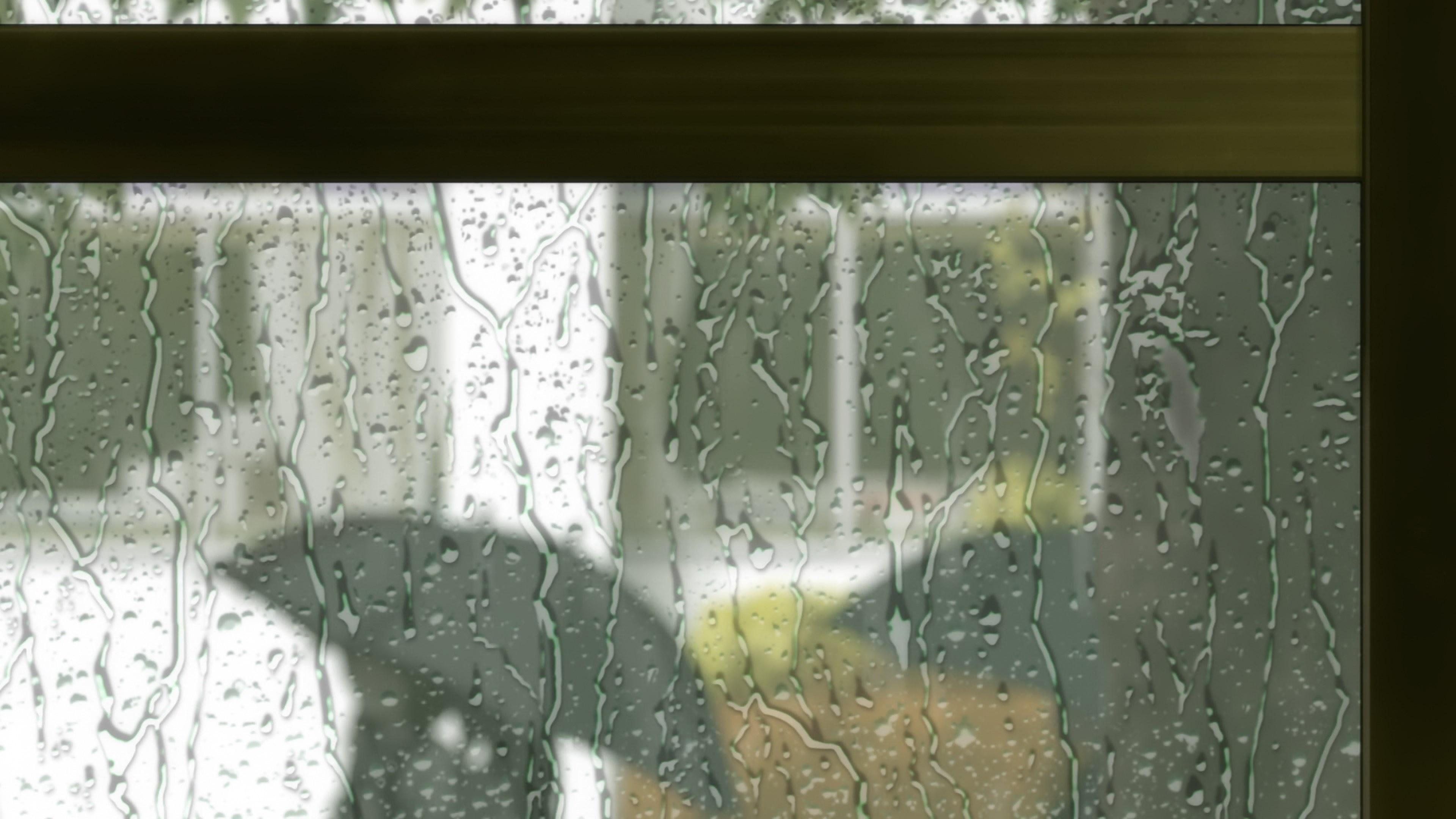

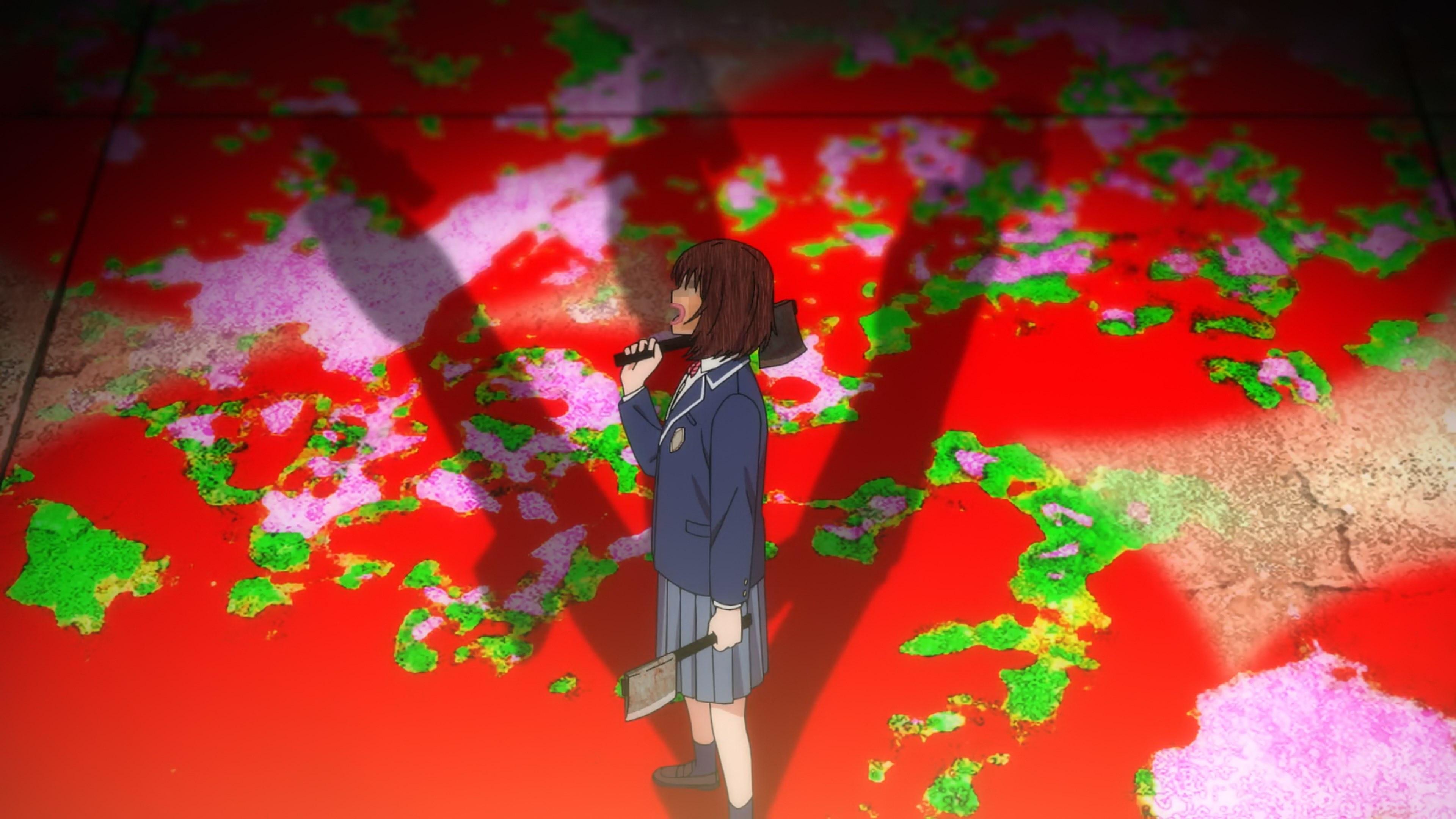

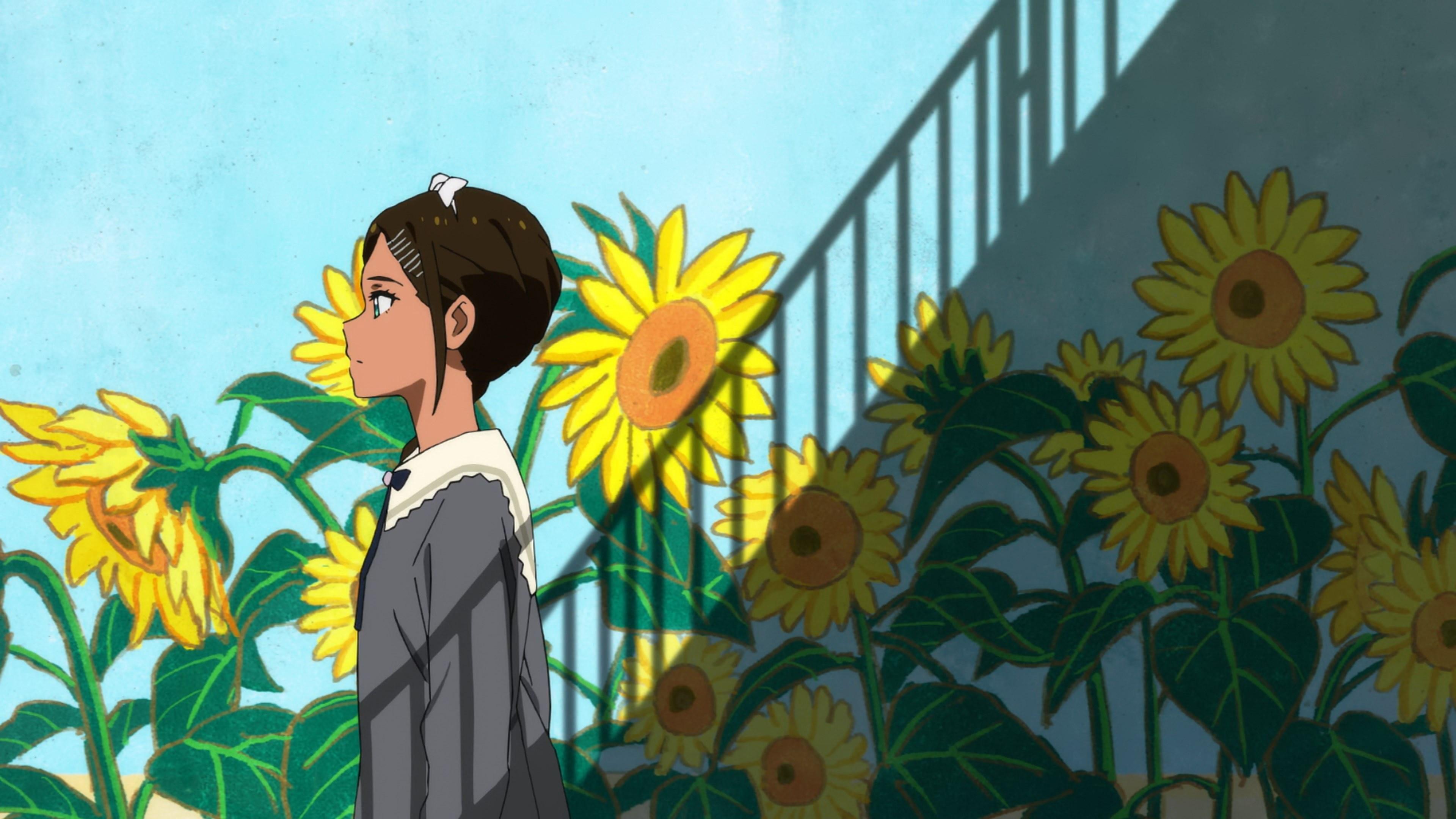
I can’t help but have some CGI vibes on certain cuts, especially those focusing on characters, but I can’t quite get why…
I can see various types of cuts giving you that feeling, for pretty different reasons at that. Some of the more delicate sequences like the one in the stairway have immaculate polish, a lot of volume to their drawings, and a deliberate uncanny feel to it – all of those being qualities that we usually attribute to 3DCG. The tactility there is the giveaway of them being traditionally animated, ofc. On the other hand you’ve got MYOUN’s work in particular, which uses more stylized and angular drawings you’d think would never give off that feeling, but they’re actually so good… Read more »
This gave me more insight into the show along with its creative ideas, themes and narrative. There was a lot I was wondering about; one being how it works so well. This was really informative. Simply made me love WEP way more
On the point of replica/influence by Yamada style, i wonder what it’s would look like in the live-action
Seeing how well anno transition his directing style to his live-action film make me really wanting to see more of that, perhaps that would just make it’s lose its magic by changing the medium but still I think it would work very well even enchanting
Some of the appeal is inherent to seeing live-action techniques/philosophy applied to animation, but I think the skill set of people like Yamada could translate pretty naturally!
I cried reading this, thank you to who write, you are really smart, I couldnt even image all of that.